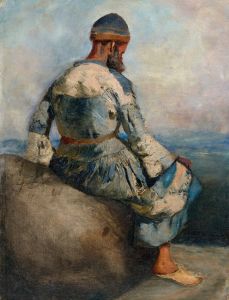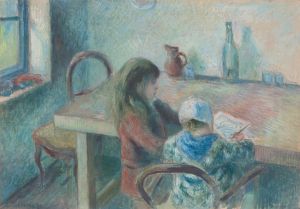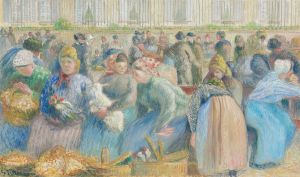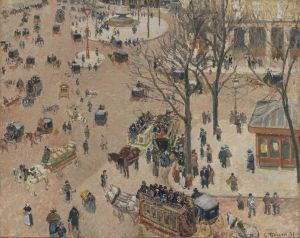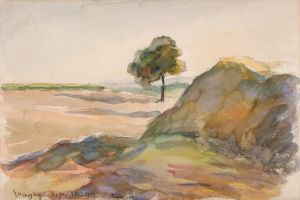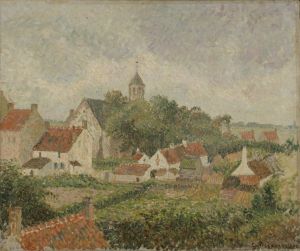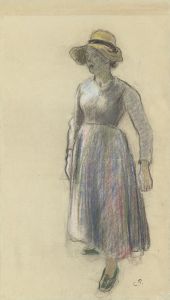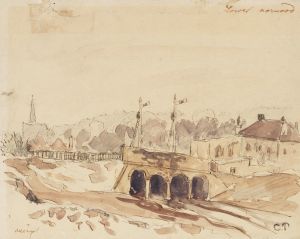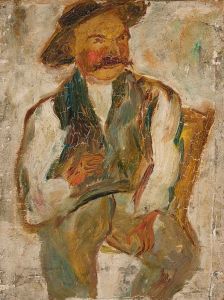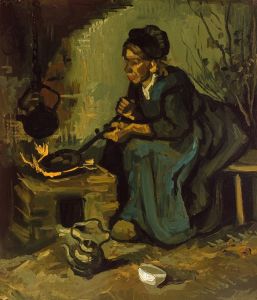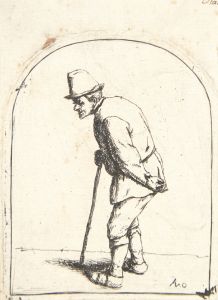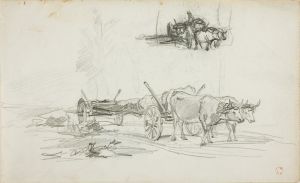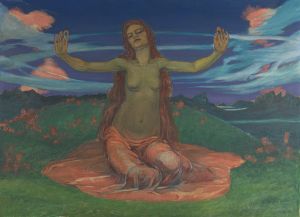
Peasant Woman
A hand-painted replica of Camille Pissarro’s masterpiece Peasant Woman, meticulously crafted by professional artists to capture the true essence of the original. Each piece is created with museum-quality canvas and rare mineral pigments, carefully painted by experienced artists with delicate brushstrokes and rich, layered colors to perfectly recreate the texture of the original artwork. Unlike machine-printed reproductions, this hand-painted version brings the painting to life, infused with the artist’s emotions and skill in every stroke. Whether for personal collection or home decoration, it instantly elevates the artistic atmosphere of any space.
Camille Pissarro, a pivotal figure in the Impressionist movement, painted "Peasant Woman" during a period when he was deeply engaged with rural themes and the lives of ordinary people. Pissarro, born on July 10, 1830, in the Danish West Indies, moved to Paris in 1855, where he became a central figure in the Impressionist circle. His work often focused on rural scenes and the working class, reflecting his interest in social issues and his anarchist beliefs.
"Peasant Woman" is a testament to Pissarro's dedication to portraying the dignity and simplicity of rural life. The painting depicts a woman engaged in a daily task, possibly in a field or a farm setting. Pissarro's use of color and light captures the natural environment and the woman's integration into it, a hallmark of his Impressionist style. The brushwork is loose and fluid, allowing the viewer to sense the movement and vitality of the scene.
Pissarro's choice of subject matter was influenced by his admiration for the Barbizon School, which emphasized painting en plein air and focusing on natural landscapes and rural life. This influence is evident in "Peasant Woman," where the emphasis is on the authenticity and immediacy of the moment. The painting does not romanticize the woman's labor but instead presents it as an integral and respected part of life.
Throughout his career, Pissarro was known for his commitment to painting outdoors, capturing the effects of light and atmosphere on the landscape and figures. This approach is evident in "Peasant Woman," where the natural light plays a crucial role in defining the forms and setting the mood of the painting. The colors are typically muted, reflecting the earthy tones of the countryside and the simplicity of the peasant's attire.
Pissarro's work was often characterized by a sense of harmony between humans and nature, and "Peasant Woman" is no exception. The painting reflects his belief in the importance of the rural community and the value of labor. It also demonstrates his technical skill in rendering the subtleties of light and shadow, a skill that he developed over decades of painting and teaching.
As a mentor to younger artists, including Paul Cézanne and Paul Gauguin, Pissarro's influence extended beyond his own work. His dedication to the Impressionist movement and his willingness to experiment with new techniques and ideas made him a respected figure among his peers. "Peasant Woman" is a reflection of his artistic philosophy and his commitment to capturing the essence of everyday life.
In summary, "Peasant Woman" by Camille Pissarro is a significant work that embodies the artist's dedication to portraying rural life with authenticity and respect. Through his use of light, color, and composition, Pissarro captures the dignity of the peasant woman and her connection to the natural world. The painting is a testament to Pissarro's skill as an artist and his commitment to the principles of Impressionism.





